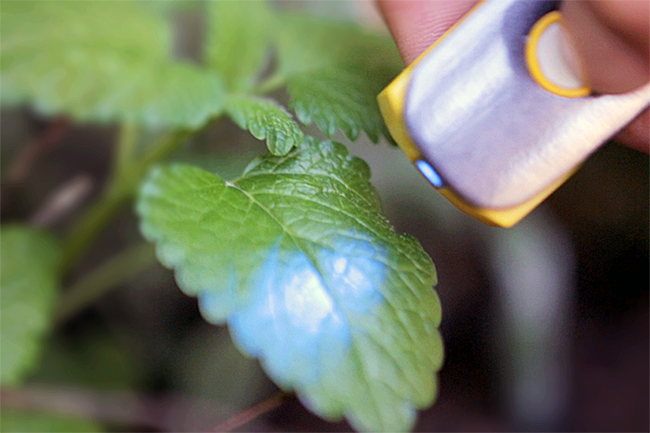
Tel Aviv-based startup Consumer Physics pulled the curtain back today on its first product: a tiny hand-held molecular sensor called Scio. The device, which Consumer Physics has launched a Kickstarter project for, would allow users to scan practically anything –foods, drinks, pills, plants, and more– and get detailed information on the object’s chemical makeup in just a few seconds.
It might sound like science fiction, but it’s actually built around an age-old method of materials analysis known as near-infrared spectroscopy. Basically, this process involves shining a near-infrared light onto the surface of a given material, which causes the molecules to vibrate and bounce back light in their own unique way. This reflected light is then collected and passed through a spectrometer (think of it like a prism) that separates the light out into all the different wavelengths it contains. By analyzing the unique optical signature of the scanned material, it’s possible to determine what it’s made out of.
Near IR-spectroscopy has been used by scientists for decades, but up until Scio, spectrometers were very large, and prohibitively expensive. To bring the technology out of the lab 
To deliver scan analysis information in real time, Scio communicates the spectrum to your smartphone app via Bluetooth, which it then forwards to a cloud-based service. From there, advanced algorithms analyze the spectrum, and delivers information regarding the analyzed sample back to your smartphone within seconds.
It’s not just limited to food and drinks either. Technically, Scio can be used to determine the molecular makeup of anything except metals, so it has an extremely broad range of potential applications. Need to determine the CO2 content of your home-brewed beer? Want to know the ripeness of an avocado at the grocery store? Want to check to make sure the drink you left sitting at the bar hasn’t been tampered with? Scio could make that happen. Consumer Physics is even releasing a software development kit, so third-party developers will be able to create their own applications for the device.
Oddly enough, this isn’t the first time a device like this has hit the crowd-funding scene. You might remember a similar device called TellSpec from Indiegogo late last year. Both devices rely on molecular spectroscopy to scan foods — the difference is that Scio is actually past the R&D stage. Consumer Physics has already developed multiple working prototypes, and will supposedly be ready to ship to early backers as soon as December of this year.
If you’re quick enough, you can lock down a developer kit right now for the early-bird price of $150, or pre-order the finished consumer version for $199. Head over to Kickstarter for more info.




